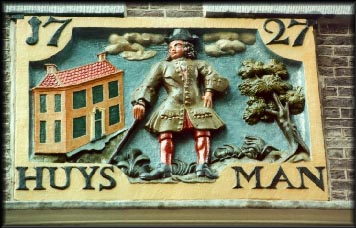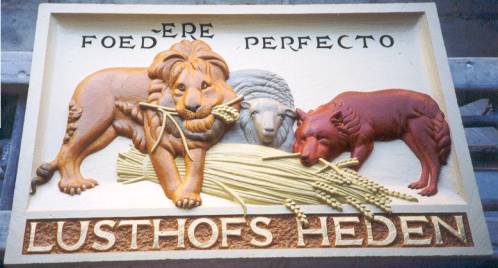 THE
MUSEUM OF INSTANT IMAGES THE
MUSEUM OF INSTANT IMAGES
Mail (art) project
 
click on pictures
to see historical and contemporary examples
The use of street signs
and house numbers was introduced in The Netherlands about 1795.
Before that time
a house was indicated by anything that might be notable about
it. In most cases reference
was made to a particular distinguishing mark that had often
been fitted on to it for this
purpose and had the additional property of being a sort of emblem
for the occupant.
Thus there were signboards,
stone tablets, marks, superscriptions or inscriptions, coats
of
arms and heraldic
figures, awnings etc. Addresses were simply referred to as
the house "where the
red boot hangs out", or
the place "where the working cooper is shown on the gable",
or the dwelling "with
the two sea-gods lying on the gable".
These signs also served
as distinctive marks helping people to show someone the way.
|

VERENIGING
VRIENDEN VAN AMSTERDAMSE GEVELSTENEN
Willem Janz. -
On the water
In the
gilt sundial
To Amsterdam
|
Joannes Loots
- In the New Bridge Alley
In the
young pilot
In Amsterdam
|
To Gergje -
Living behind the ramparts
In Shortrosedale
This
woman's husband
Is crippled
and walks
With
a crutch
|
.
How
were addresses indicated in other parts of the world in the days
when housenumbering had not yet been introduced?
PLEASE HELP ME MAKE RESEARCHES
INTO THE ORIGIN OF ADDRESSES
.
* send a description
of the former system in your town or country
* images of the remnants
of the system
* old maps of your town
with indications of addresses
Size and technique free
No deadline
Documentation to all
participants
Online gallery on WWW
.
Send your contribution
to:
.
ColoriMii
The Museum of Instant
Images
Beckershagen 15 -
Chaam - 4861SE
Pays Bas - The Netherlands
- NL
.
or e-mail: mii@colori.nl
(jpg, gif, html)
 to
the galleries
to
the galleries

|
 THE
MUSEUM OF INSTANT IMAGES
THE
MUSEUM OF INSTANT IMAGES
 THE
MUSEUM OF INSTANT IMAGES
THE
MUSEUM OF INSTANT IMAGES